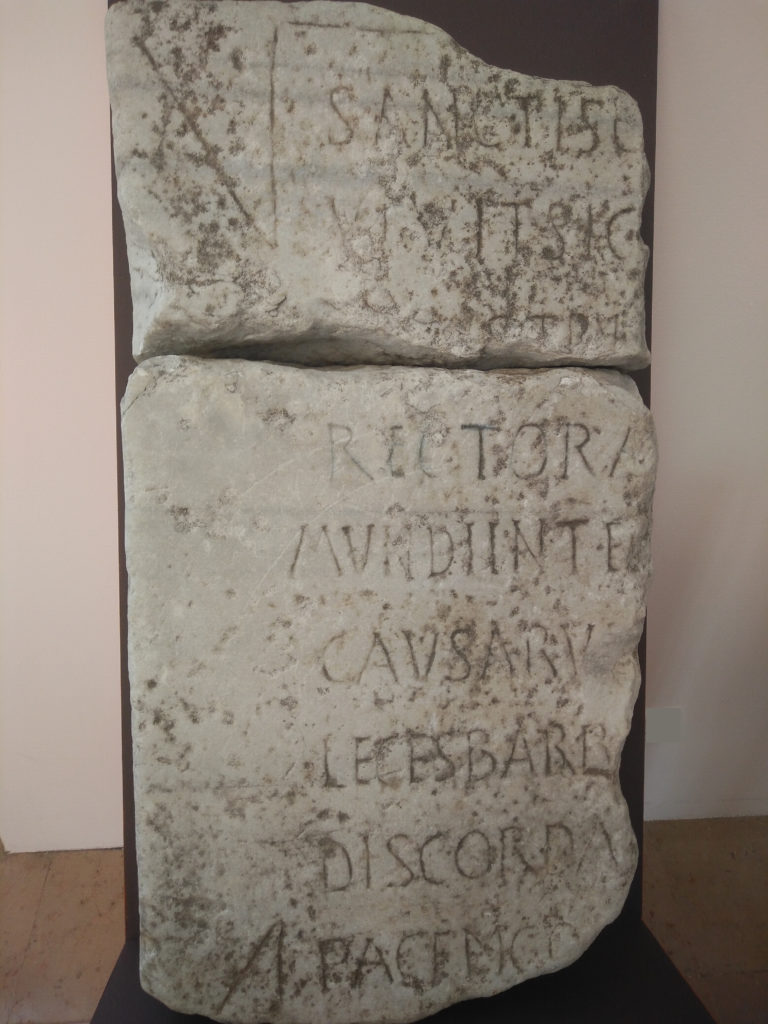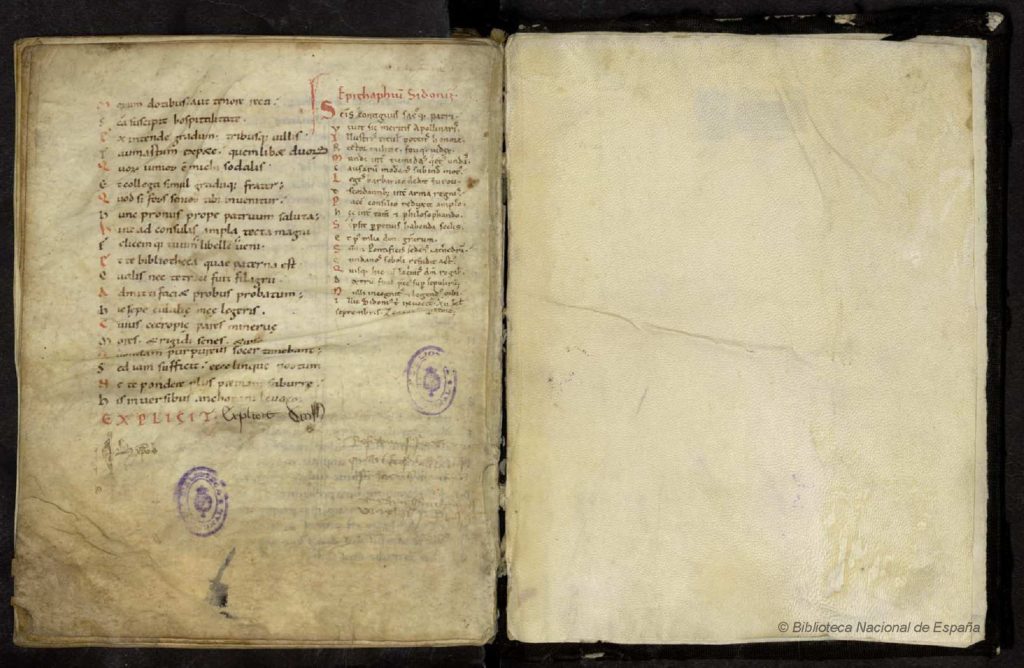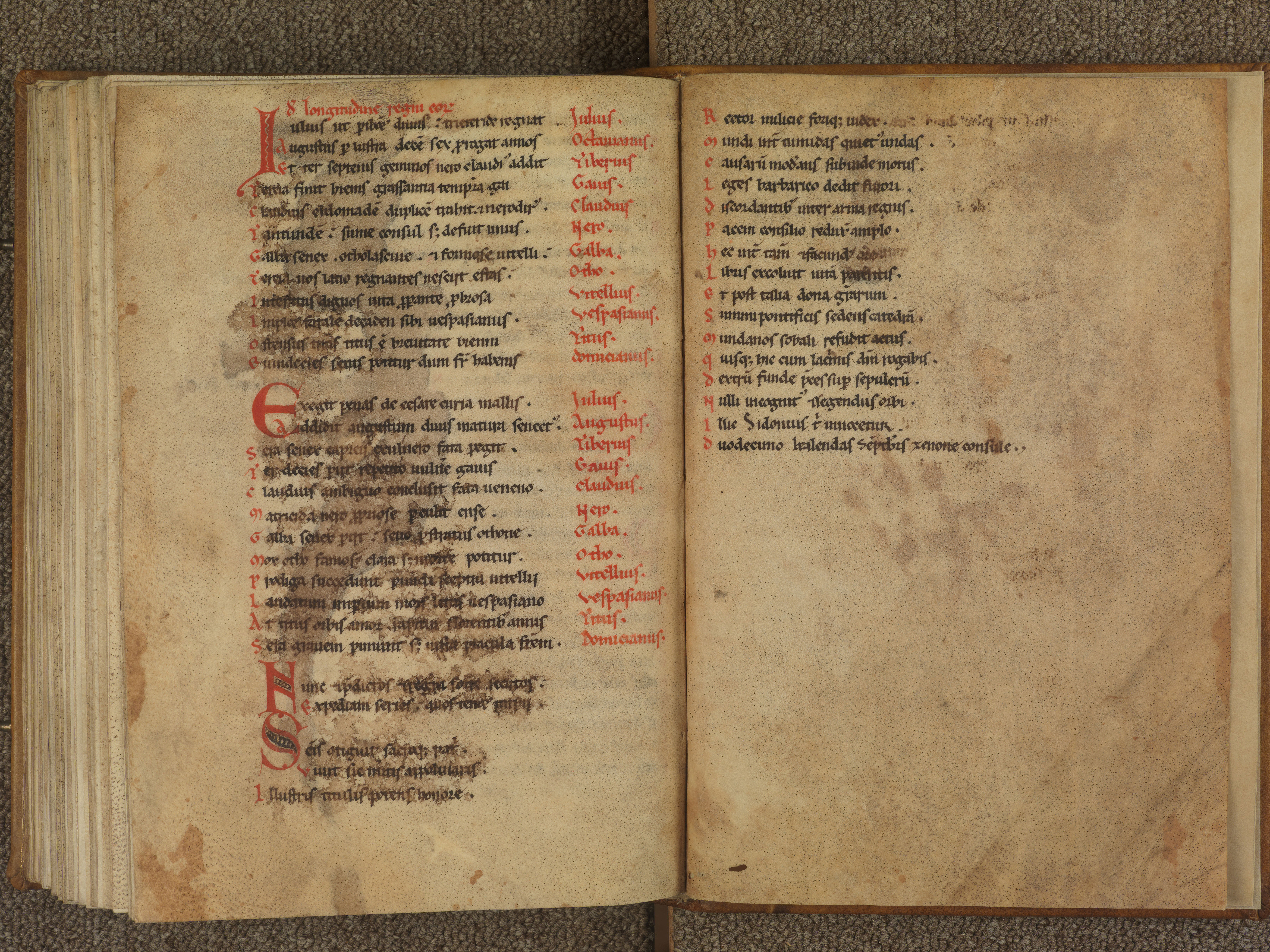Bibliography
Brown, Peter, Through the Eye of a Needle, Princeton, NJ, 2012.
Condorelli, Silvia, ‘Gli epigrammi funerari di Sidonio Apollinare’, in: Marie-France Guipponi-Gineste and Céline Urlacher-Becht (eds), La renaissance de l’épigramme dans la latinité tardive, Paris, 2013, 261-82.
Cugusi, Paolo, Aspetti letterari dei Carmina Latina Epigraphica, Bologna, 1985.
Furbetta, Luciana, ‘Un nuovo manoscritto di Sidonio Apollinare. Una prima ricognizione’, Res Publica Litterarum 37 (2014) 135-57.
—–, ‘L’epitaffio di Sidonio Apollinare in un nuovo testimone manoscritto’, Euphrosyne NS 43 (2015) 243-54.
Köhler, Helga, C. Sollius Apollinaris Sidonius. Briefe, Stuttgart, 2014.
Le Guillou, Jean, Sidoine Apollinaire. L’Auvergne et son temps, Mémoires de la Société ‘La Haute-Auvergne’ 8, Aurillac, 2002.
Loyen, André, Sidoine Apollinaire, vol. 1 Poèmes, CUF, Paris, 1960.
Mascoli, Patrizia, ‘Per una ricostruzione del Fortleben di Sidonio Apollinare’, Invigilata lucernis 26 (2004) 165-83.
Montzamir, Patrice, ‘Nouvel essai de reconstitution matérielle de l’épitaphe de Sidoine Apollinaire (RICG, VIII, 21)’, AnTard 11 (2003) 321-27 ill. plan.
—–, ‘Confirmation de l’existence de l’épitaphe de Sidoine Apollinaire’, in: Bertrand Dousteyssier and Philippe Bet (eds), Éclats arvernes: Fragments archéologiques (Ier-Ve siècle apr. J.-C.), Clermont-Ferrand: Presses Universitaires Blaise Pascal, 2014, 46-47.
—–, ‘Sidonius’ Presumed Epitaph: Two Manuscripts, Two Fragments of Stone, and Many Questions’, Contributions to the Sidonius Apollinaris Website, 1 July 2023 [available on Contribs and Text page].
Prévot, Françoise, ‘Deux fragments de l’épitaphe de Sidoine Apollinaire découverts à Clermont-Ferrand’, AnTard 1 (1993a) 223-29.
—–, ‘Sidoine Apollinaire et l’Auvergne’, RHEF 79 (1993b) 243-59 (reprinted in Bernadette Fizellier-Sauget (ed.), L’Auvergne de Sidoine Apollinaire à Grégoire de Tours: histoire et archéologie, Clermont-Ferrand, 1999, 63-80).
—–, ‘RICG VIII, 21: Clermont Ferrand, Saint-Saturnin (?)’, no 21 in Recueil des inscriptions chrétiennes de la Gaule antérieures à la Renaissance carolingienne, vol. 8 Aquitaine première, Paris: CNRS, 1997, 116-26.
Stevens, C.E., Sidonius Apollinaris and His Age, Oxford, 1933.
Wood, Ian, ‘The Silence of Sidonius’, in: Alessandro Campus, Anna Chahoud, Gianfrancesco Lusini and Simona Marchesini (eds), Tempus Tacendi. Quando il silenzio comunica, Verona: Alteritas, 2023, 213-28.



